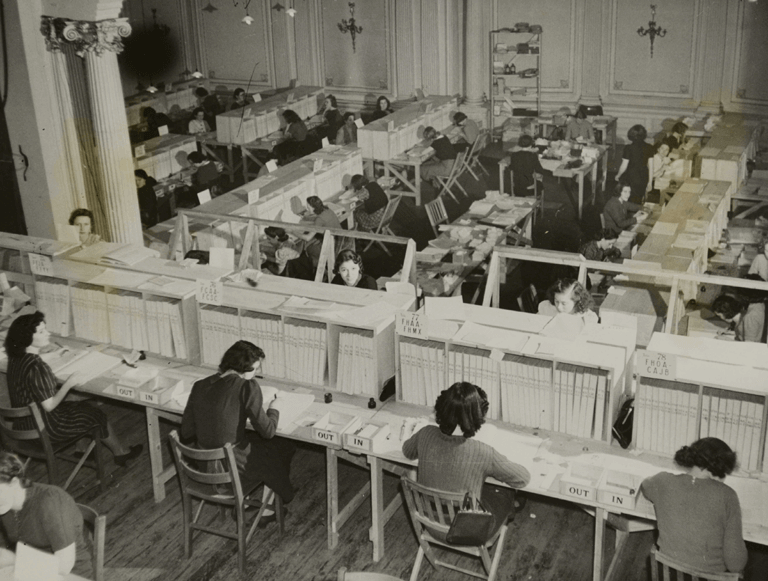The 1939 England and Wales Register is a valuable resource for family history research, particularly in learning about your more recent relatives. It is the only surviving overview of people in the UK and Wales from 1921 to 1951 – the 1931 census was destroyed during World War II, and the 1941 census was cancelled because of the fighting that ensued.
The 1939 Register was taken at the start of World War II to collect key information about every civilian in England and Wales. This information was then used to produce everyone’s National Identity Cards. At first, the Register was simply an overview of the population, but it was later used for rationing and tracking the movement of the population for decades after the war.
The Register is considered to be a ‘living document’, which means the data that was originally taken was updated over time to reflect changes in your ancestors’ lives.
For example, while you’ll find key information such as name, gender, address, date of birth, marital status and occupations within the records, you’ll also find notations that point to changes, such as maiden names being crossed out and replaced with a married surname.
The records might even hold a few extra details like whether your ancestor worked as an air raid warden.
You may find that some records are hidden or redacted, which is to protect the privacy of people who are still alive. While the records will be opened gradually over time, you can also contact The National Archives to request a record be closed, or opened if you believe the person to be deceased.
The 1939 Register is incredibly useful, as along with its rich details, it also reveals an overview of life in 20th Century Britain and helps us to understand what life was like for our family at this time.
With the Register taken very shortly after WWII had been declared, we can start to get a sense of the impact this had on our families.
For example, 1.5 million civilians (including children, mothers and pregnant women) were evacuated to the countryside for their safety during the combat of WWII. Foster families took them in, and while many experienced the joys of fresh air and farm life for the first time, these experiences were tarnished by homesickness and uncertainty.
Rationing became a key part of the war effort, with restrictions placed on basic food and resources like eggs, butter, bacon, cheese, milk and fuel.
Women also stepped into new roles in order to help out with the war effort. As a result, we can see how the impact of austerity measures changed the course of fashion, bringing new styles that were more practical for wartime.
But despite the hardships, our ancestors kept calm and carried on – working hard to help forge a more positive future for their descendants.
You can learn more about their lives by exploring the 1939 England and Wales Register on Ancestry and begin building out the more modern branches of your family tree.
Kristen Hyde
Kristen is Ancestry’s Social Media Manager for the United Kingdom. This article originally appeared on the UK Blog.

